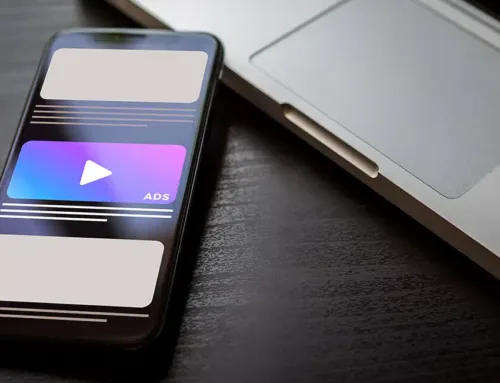How to Get Started with Programmatic Advertising
Programmatic Advertising refers to the use of automated systems to purchase and place online ads. It has become a popular and effective way for businesses to reach their target audiences, but if you are new to the world of programmatic advertising, it can seem intimidating and overwhelming.
It is an automated buying process but you have to manage your campaign after considering your goals. Programmatic advertising, often known as the automated purchasing and selling of online advertising space in real-time auctions, relies heavily on an ad exchange. It buys and sells online display space using algorithmic software.
Ad Exchange is a platform that connects publishers and advertisers to make it easier to buy and sell online ad inventory. Publishers can sell their available ad inventory to the highest bidder on the ad exchange, which functions as a marketplace where advertisers can bid on available ad impressions.
Programmatic advertising may be the most significant development in digital marketing that you have not yet heard about.
Programmatic Ads in Digital advertising
Programmatic ads have become a mainstay of digital advertising. Whether you’re new to programmatic ads or a seasoned veteran, you may be asking how to develop a successful programmatic advertising plan that can increase sales for your company. It is not difficult to create a programmatic display ad campaign. You don’t have to spend 18 months preparing to enter the programmatic market, but it will still take some reasonable time to start. Programmatic advertising offers a slew of advantages that were unthinkable only five or 10 years ago. And it is becoming more advanced as new ad tech enters the market.
In this article, we will walk you through the steps to get started with programmatic advertising, including setting up a campaign, targeting your audience, and different Advertising Techniques that you have never heard of.
Step 1: Set your campaign goals
Before you start building your programmatic advertising campaign, it is essential to have a clear idea of your goals and budget. Do you want to drive traffic to your website, generate leads, or increase brand awareness? Knowing your objectives will help you create a programmatic campaign that is aligned with your business goals. Among many other goals, you could wish to raise brand recognition, enhance sales of a certain product, encourage individuals to join an email list, or increase traffic.
Step 2 Determine your budget
It is also important to set a budget for your campaign. Determine how much you are willing to spend on programmatic advertising and allocate your budget accordingly. Keep in mind that programmatic advertising can be more cost-effective than traditional methods due to the automation and real time bidding process, but it is still important to be mindful of your budget and track your spending.
Your performance objectives will assist you in determining the parameters for your ad campaign. For example, if you want to increase visitors to your website, you should use broader targeting choices and a more creative message. Your programmatic campaigns depend on this stage because if you well
More crucially, programmatic ad campaigns may target consumers using data, allowing for ongoing optimization of KPIs throughout the customer journey, increased efficiency, and enhanced success. When you decide on your budget then it will be easy for you to determine how to achieve your advertising goals using programmatic advertising.
Step 3: Choose your programmatic advertising platform
There are a number of programmatic advertising platforms available, each with its own unique features and capabilities. Some popular platforms include Google AdWords, Bing Ads, and Facebook Ads. Consider which platform aligns best with your business goals and target audience. Demand side platform and supply side platforms are components of programmatic advertising and they help in programmatic display ads.
Step 4: Selecting Demand Side Platform:
Demand Side Platforms are similar to Google Advertising, except instead of sending your advertisements to an unknown list of display partners, a DSP sends your ads to a high-quality network of publishers across a variety of mediums. TV channels, radio stations, content platforms such as Hulu and Netflix, social networking sites, and others are examples. You should make sure that the chosen DSP has no platform fee.
If your ad tech stack is synchronized, you just need to generate the ad tags in the Adserver rather than uploading them to the DSP. You may access sophisticated metrics and audiences in the DSP if your DSP is connected to your website analytics.
Step 5: Determine the form of programmatic advertising advertising
Marketers can create effective ad campaigns by understanding native ad specs. There are four forms of programmatic advertising: programmatic direct, real-time bidding, preferred deals, and private marketplaces. Pre-roll, super pre-roll, native, and over-the-top are the four basic types of ads unit for Programmatic (OTT). Pre-roll and native video commercials are in line with what consumers expect from advertisements, allowing companies to contact customers in a manner that is comfortable for them. Many digital marketers prefer to select the ad type at this stage. For example, whether they need native ads or video ads in their future campaigns.
Your tool selection is critical to your performance since it determines how you access your campaign settings and analytics data. Depending on your selected ad type, this might signify a variety of things. Programmatic advertising is an excellent method to test new ad formats across several platforms. We recommend starting with one format and extending into others after you have a successful campaign. Testing a variety of different ads in various formats can make determining ad success difficult without spending a significant amount of money on testing.
Step 6: Target your audience
One of the major benefits of programmatic advertising is its ability to target specific audiences with precision. To do this, you will need to define your target audience based on factors such as demographics, interests, and behaviors. Use the data available on your chosen platform to create a target audience that aligns with your business goals. Programmatic advertising also helps in detailed targeting because it offers detailed targeting options. Programmatic buying platforms use analytics and AI to identify relevancy and increase targeting accuracy when placing these ads.
Step 7: Implementing Data
Implementing a first-party data programmatic advertising strategy may necessitate technological investment, but it also gives a chance to strengthen consumer connections. Customers have more insight and control over the data they provide with your business when you gather first-party data directly from them. That’s fantastic! However, it does imply that your company must provide enough value exchange for people to think that providing their data is worthwhile.
You ought to be able to create campaigns that focus on audiences by IAB category, geography, operating system, browser, language, and more.
When you need a broad audience, the CPM approach is excellent. It’s also excellent for brand awareness efforts and other promotions that don’t rely on people doing a specific action.
Step 8: Create your ad
Now, it is time to create your display advertising. This will involve designing the visuals and writing the copy for your ad. Keep in mind that your ad should be relevant and engaging to your target audience. Test different variations of your ad to see which performs the best. Programmatic services make it simple to manage all ad types, locations, and their effects on user engagement.
When you’re ready to get started, start by creating your audience profiles, advertising plan, and KPIs. This will aid you in determining which programmatic ad exchanges and ad networks are best for you. Now, you’re ready to create campaigns for your digital marketing.
Step 9: Set up your targeting and bidding
Programmatic advertising makes you capable to target your desired audience in real time. Once you have created your ad, it is time to set up your targeting and bidding. This involves choosing the locations and websites where you want your ad to be displayed, as well as the budget for your ad.
You can also set up specific targeting parameters, such as age, gender, and interests, to further narrow down your audience. Programmatic advertising offers creative targeting settings so that you can target your desired audience easily. Make changes to your creative targeting options. You’re ready to launch once you’ve completed these steps and double-checked your work. We are able to locate a wider variety of individuals that are seeking our goods by utilizing advanced targeting capabilities through programmatic.
Often, you’ll establish a daily budget, and if that budget is met, your ad will cease running until the next day. You can begin your campaign once you’ve made all of these decisions and put it up. If you’re conducting an RTB campaign, your DSP will put your bid anytime someone hits the relevant site. If you win the auction, your ad will be shown on the site.
Step 10: Launch your campaign
Once you have set up your campaign and ad, it is time to launch it. This will involve activating your ad and setting it live. Make sure to monitor your campaign regularly to ensure it is meeting your goals and making the most of your budget. You can monitor your programmatic ads at any time. Moreover, you can view your ad spend in real time because programmatic ads provide the option to monitor your ad spend.
It’s crucial to start optimizing your ad campaign as soon as it goes online. Use your DSP to obtain real-time reports and analyze the data contained within them to evaluate the success of each source by evaluating key metrics such as the campaign’s CTR, CPC, overall cost, and conversion value. Use this information to discover possible issue areas in your marketing campaign. In order to increase the efficacy of your campaign, understand what is A/B testing and how to apply it most effectively. The most popular metrics used to analyze A/B testing in programmatic advertising are click-through rates (CTR), conversion rates, and cost per acquisition (CPA), and then use your data to design solutions.
Once you have chosen a platform, create an account and set up your campaign. This will involve entering your business information and setting up payment details. Some platforms may also require you to set up conversion tracking, which will allow you to measure the success of your ads.
Step 11: Measure and optimize your campaign
It is important to measure the success of your programmatic advertising campaign and make adjustments as needed. Look at metrics such as clicks, impressions, and conversions to see how your ads are performing. Use this data to optimize your campaign and improve its effectiveness. Programmatic advertising has the ability to help you prosper if you want to optimize ad spend, increase your organization’s ROI, and connect with your target audience.
The frequency restriction allows you to prevent what we call “annoying ads,” which are displayed to the same user on every website 20 times each day. Some particularly “successful” programmatic adverts may appear many times on the same page: Always set a fair frequency restriction to avoid the issue of Brafton’s programmatic ad campaign.
Conclusion
In conclusion, programmatic advertising can be a powerful tool for reaching your target audience and achieving your business goals. By following these steps, you can get started with programmatic advertising and start seeing results. It is a sophisticated method of advertising placement that leverages traffic data and online display targeting to create impressions at scale, resulting in a higher ROI for advertisers. There is no doubt that increasing brand awareness is not difficult if you’re using programmatic ad in a proper way. Don’t be afraid to experiment and try new strategies as you learn and grow your programmatic advertising skills











